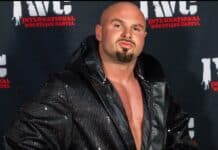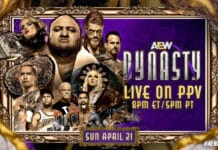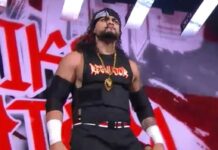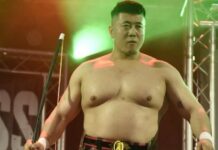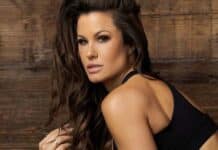While it’s officially December, forgive me as a busy schedule and the continuous rumor mill of the current wrestling landscape prevented getting this edition of the VHS Memoirs posted in November to go along with a theme for the review. The quality of the events usually dictated differently, but for the first few years of its existence, ECW touted the November to Remember as its biggest show of the year. Unfortunately, the 1998 edition of the event didn’t live up to that hype and foreshadowed some of the problems that would plague the promotion in the next few years.
A common theme that you will see throughout this show is, several performers were shoehorned onto the pay-per-view without any logical purpose and it further diluted an already clustered broadcast. At the opening, Terry Funk, who had been seen most recently at the time in the WWF for a run that started as Chainsaw Charlie, interrupted Joey Styes and claimed that Tommy Dreamer should’ve picked him as the mystery tag partner for later in the night. I love Terry Funk and it’s always great to see him on-screen, but I’m not sure what Paul Heyman was going for here because ultimately, Funk’s presence throughout the night seemed totally random to the point that it almost distracted from the rest of the PPV. For example, the opening match was The Blue Meanie and Nova vs. Road Kill and Danny Doring for a very basic tag match. While these four competitors were much more polished for pay-per-view a few years later just before the shutdown of the organization, some of the inexperience shows through here. I’m not sure if this match could’ve gotten to a second gear, but it wasn’t given the chance anyway because Funk was back at ringside to get involved in the contest. In a rather comical moment, Funk gets knocked from the apron to crash through a table, but when the table doesn’t break, the legend simply sets it up again and jumps through it. The BWO get the win, but there wasn’t really anything to this match. A side note, despite how popular the Blue World Order was the prior year, without Stevie Richards, you can tell the act had fizzled. It should also be noted that by the end of the company, Road Kill and Doring were a solid team that probably don’t get the credit they deserve for their run.
As far as performers being shoehorned into a segment, Tracy Smothers vs. Tommy Rogers was a prime example of it. This was a situation where the performers are entertaining, but this particular mixture just didn’t yield those results. For whatever reason, Chris Chetti was at ringside with Rogers, and Ulf Herman was alongside the FBI. On paper, Smothers vs. Rogers should be a solid bout, but constant interference from each wrestler on the outside to get a chance to do a spot on pay-per-view kept this an average match at best. It becomes a constant cluster and the bout doesn’t develop any pace so it’s just disjointed spots for about six minutes. Rogers tried to cut a pre-match baby face promo about New Orleans and it becomes very apparent why he wasn’t known for his mic work throughout his accomplished career. The contest received very little crowd reaction even after Rogers got the victory.
Post-match, Mabel made a one-off surprise appearance wearing an FBI t-shirt and attacked Chetti without any explanation. Spike Dudley made the save and after a brief exchanged pinned Mabel. As will also be seen later in the show, this pay-per-view starts to look like random wrestlers just happened to show up so Heyman threw them onto the show. At this point, because of the Funk interruption that dragged to start the show, it’s 45 minutes into the broadcast and there hasn’t been anything that was PPV quality.
At Anarchy Rulz 1999 nearly a year later, Lance Storm and Jerry Lynn had one of the best matches in the history of the company to start the show. In this November to Remember bout, you can see glimpses of why, but again this was hindered by an attempt to get as many performers screen time as possible. Somehow, Tammy Sytch, who was released from the WWF a few months earlier, was one of the special guest referees for the match, while Mikey Whipwreck was an outside enforcer. It made no sense why either of them would be involved in a Storm/Lynn match, and despite really good technical spots, the crowd was more concerned with Sunny’s skirt every time she attempt to count a pin. A rather odd finish saw Whipwreck help Storm get the win.
Thankfully, the show picked up with The Dudleys vs. Masato Tanaka and Balls Mahoney. This was a wild sloppy brawl, but in a good way, something that can’t be said for the main event later in the night. Watching the unprotected chair shots with a modern prospective will make you cringe, but the pieces of the match itself were assembled in a way that showcased both teams. The finish saw Sabu and Rob Van Dam assist the challengers when they did a par if insane table dives on The Dudleys. Mahoney and Tanaka won the belts, but had a rather brief run, as The Dudleys were a major focal point of the division at the time and regained the belts.
The mystery partner tag match saw Tommy Dreamer and Jake Roberts against Justin Credible and Jack Victory for a 10-minute bout that brought a few flashes of brilliance from Roberts as a reminder of his prime. Granted, Jake had history in New Orleans through Bill Watts’ Mid-South territory from over a decade previously, but I doubt that was the reasoning behind this booking. Especially by 1998, some of Jake’s personal problems that eventually overshadowed his stellar career, made his appearances back in the spotlight more of a novelty than anything else. One Man Gang showed up for whatever reason and then New Jack did a typical run-in before Dreamer and Roberts won the match.
Throughout the viewing of this show, you might start to wonder why the event lacks some depth, and the answer is because the main event six man tag match had the bulk of the star power that existed in the company at the time. The concept of The Triple Threat vs. The New Triple Threat was an idea that made sense on paper, but didn’t translate to the screen. In short, this match was an absolute mess and had no structure at all. In a 2003 shoot interview, Shane Douglas once described this as “a match where six guys were working for themselves instead of the match” and that’s a very accurate description. While there were spots going on in the ring, there were several times that something would happen outside the ring at the same time and the camera would miss it because there wasn’t a pace to the spots. This match doesn’t really develop into anything more than random brawl before the team of Taz, Sabu, and RVD get the win. Even the conclusion of the broadcast was rather flat because the baby face team argued in the ring before the show concluded.
What do you think? Comment below with your thoughts, opinions, feedback and anything else that was raised.
Until next week
-Jim LaMotta
E mail [email protected] | You can follow me on Twitter @jimlamotta

